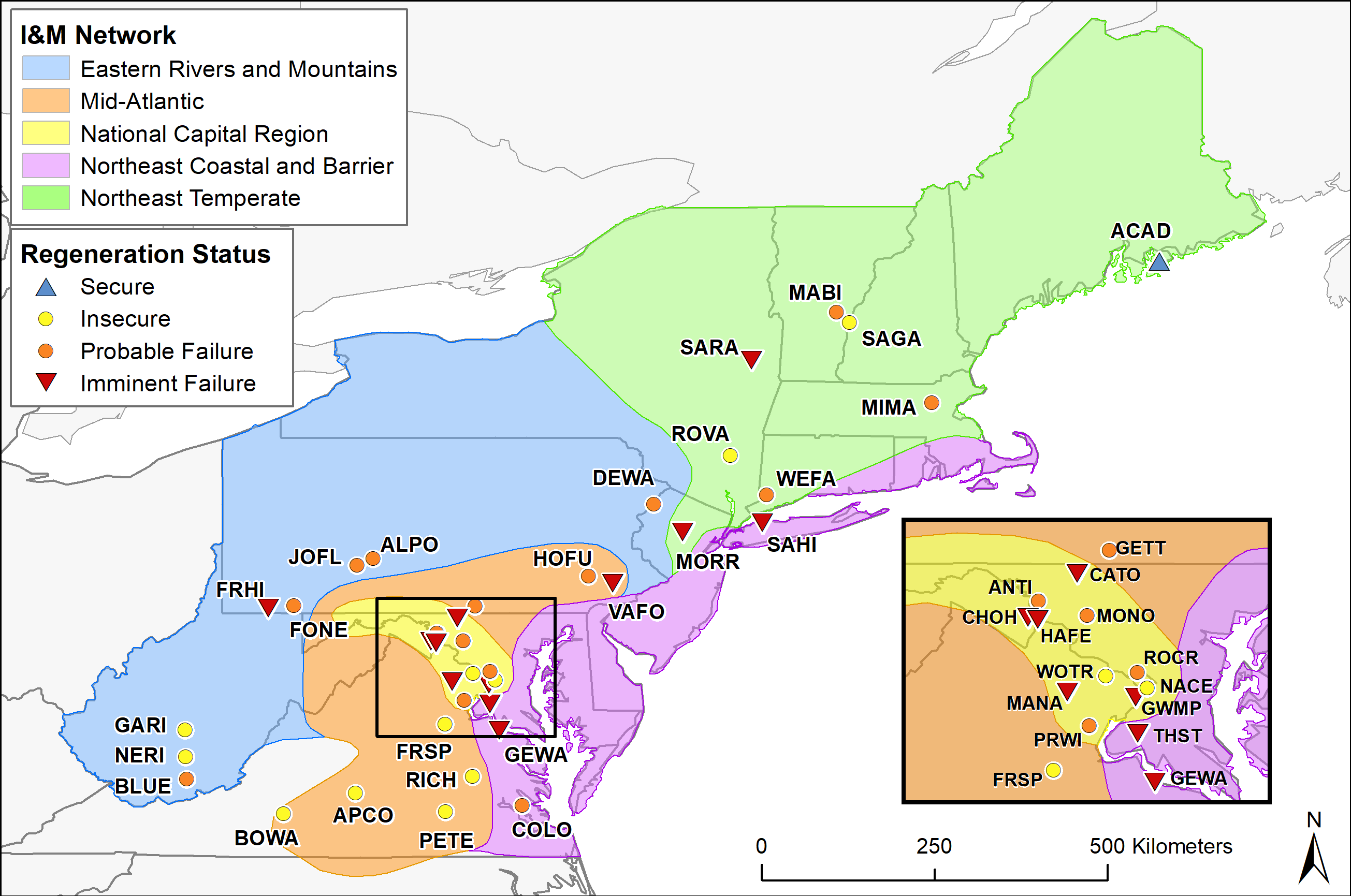The forests preserved within national parks from Maine to Virginia are critical to the region’s culture and ecology, supporting a greater proportion of older woods and greater plant and animal diversity than the surrounding landscape.
Protecting these forests requires managing these forests, because threats such as insect pests, invasive plants, overabundant deer, encroaching land development, and rapid climate change can alter forests and their ability to support wildlife and cultural practices.
Collectively, these threats and stressors can result in increased operational costs for parks to ensure visitor safety and preserve park infrastructure and have the potential to change the character of a park’s specific resource that visitors have come to enjoy.
Together with the Mid-Atlantic, Northeast Temperate, Eastern Rivers and Mountains, and National Capital Region Inventory and Monitoring Networks of the National Park Service, we assessed the current status of forests in eastern U.S. parks, using 12 years of data on tree canopy and understory growth from more than 1,400 forest plots established in some 40 national parks and historic sites.
Each park was assigned to one of four forest regeneration categories: secure, insecure, probable failure or imminent failure. Failure was “imminent” or “probable” in most park forests in the study, with browsing by overabundant white-tailed deer and crowding by invasive plants identified as the major threats. Study results were published in Ecological Applications.

Individual Park Briefs
